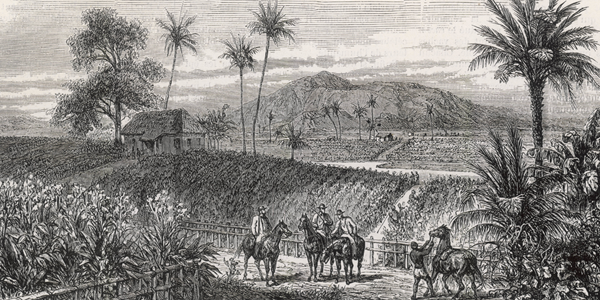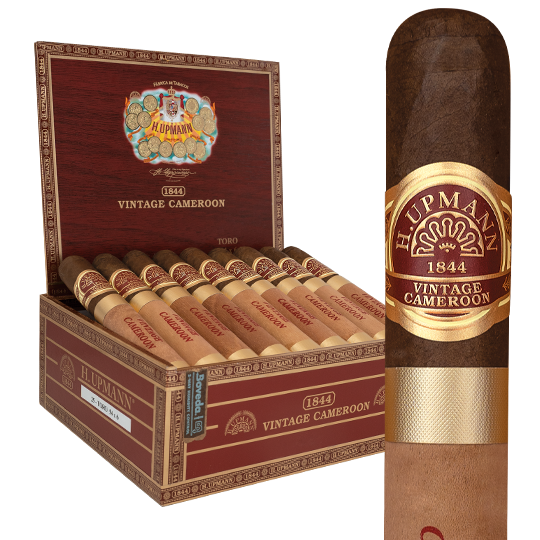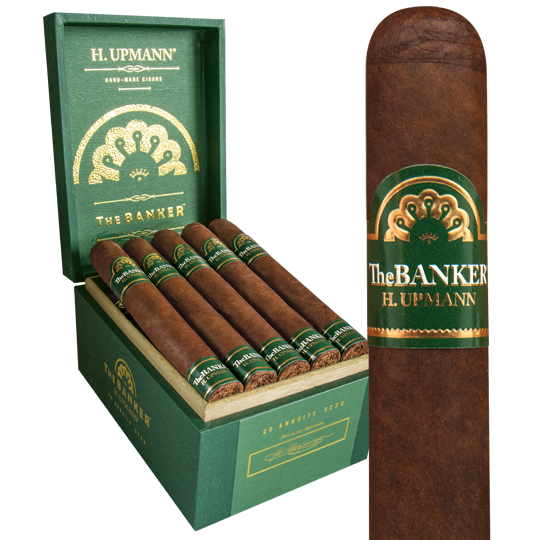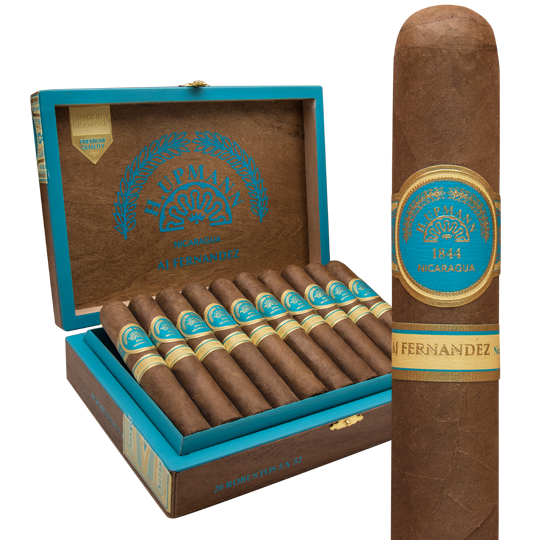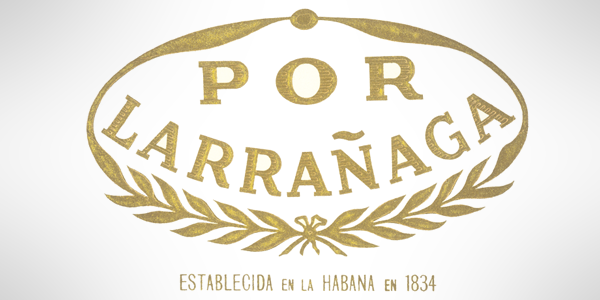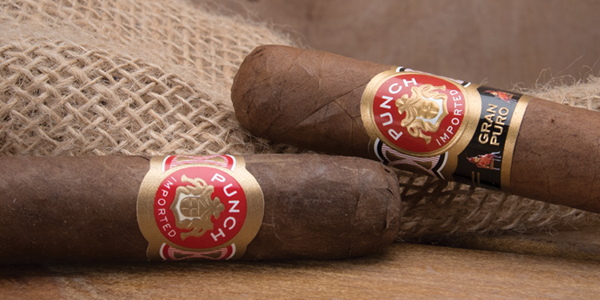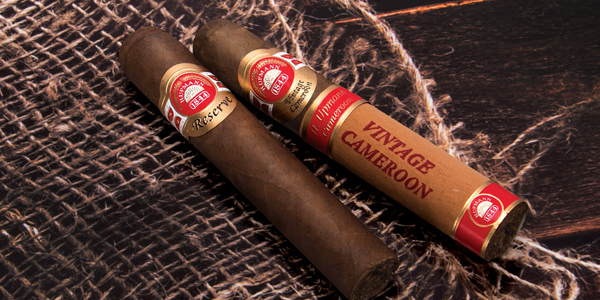What Are the Oldest Cigar Brands?
Occasionally, and only with good friends, I tell someone to go ahead and take whatever cigar they want from my humidor. First, I’m too lazy most of the time to get up and get them one, so there’s that. Second, very often some good conversations arise from having fresh eyes peruse your collection. In one case, a smallish Perfecto had been retrieved. It had no band, but I knew exactly what it was: A pre-Castro Romeo y Julieta. My friend, a relative novice to cigars, wanted to try it. He asked me, ‘What’s the oldest cigar you ever smoked?’ I think the one he just lit up could have been it, but I do recall having had a very old Cuban Punch. It was small. It had been perfectly held in the humidor of a famous shop in London. It was very good, but, again, mild.
My friend took a few puffs of the pre-Castro cigar. The draw was good, he said. The flavor was mild, but pleasant. “Is Romeo y Julieta the oldest cigar company?” he asked. I said I didn’t think it was the oldest cigar brand. Of course, that discussion just left us wondering what brand, one that is still around, IS the oldest.
The Oldest Cigar Brands
The first independent cigar brand established in Cuba was Cabañas, founded by Francisco Cabañas in 1797. Cabañas lasted until 1962 and was discontinued after being nationalized by the revolutionary government of Fidel Castro.
Romeo y Julieta was begun in 1875. The modern cigar band says so, but it’s not the oldest brand. Not by about 41 years. Now, it’s fairly easy to guess that the oldest cigar brand – and one that’s still around – is a Cuban one. Por Larrañaga came along in 1834 and Punch in 1840. Number three on the hit parade is H. Upmann, born in 1844. All three have non-Cuban counterparts today.
What’s important to understand is that the names of these three oldest cigar brands remain the same. That’s not necessarily the case for who owns them or the cigars they make.
Por Larranaga
The brand was founded in 1834 by Ignacio Larrañaga who went to Havana from Spain in 1825. By the end of the 19th century, Por Larrañaga was a popular international premium cigar.
The original company was sold in 1937, resulting in it being owned by a British concern, Morris & Morris. In 1960, ownership changed again, putting the fabrica in the hands of the Cuban revolutionary government, which continued to make the Por Larrañaga cigar. The brand remained fairly popular through the 1970s, but production dropped significantly a decade later. A battle over trademarks in the 1990s resulted in limiting export to just a few countries. Later, Por Larrañaga was almost exclusively made by machine, with some hand-finishing and the cigar being sold mainly in Canada and the Middle East outside of Cuba. Since 2002, however, all Por Larrañaga shapes are made entirely by hand, though some vitolas use short filler. Like many other Cuban brands around the same time, Por Larrañaga released a Lonsdale for sale only in one country. In this case it was Germany. This was a much-loved cigar among aficionados who still bemoan its having been discontinued. Dig into a historical account of Por Larrañaga here.
Punch
Punch, a brand that is going strong today, was founded in 1840 by a German gentleman named Stockmann. Because of the fame of the Punch name in the United Kingdom, due to a well-known character called, “Mr. Punch,” the cigar became vastly popular there. The brand was sold in 1874 and then again 10 years later to Manuel López Fernandez, whose name is still found on Cuban Punch bands and boxes. That’s when Punch really took off.
López retired in 1924 and the company lasted just until 1929, the year of the worldwide depression. The company’s financial troubles resulted in its being acquired in 1930 by Fernandez, Palicio y Cia. Punch rose again to join the company’s other brand, Hoyo de Monetrrey, as one of the world’s best. Trace the legacy of Punch cigars in our article on the brand’s history.
Jump to 1960 and the nationalization of the Cuban cigar industry by the Castro revolution. Fernando Palicio, like so many other cigar makers, fled to Florida. Seeing little future for the Cuban cigar business, Palicio sold his brands to Frank Llaneza and Dan Blumenthal, owners of Villazon & Co. Today, General Cigar owns the brands and continues to make the Punch and Hoyo de Monterrey cigars in Honduras.
If you know your Cuban cigars, you especially appreciate the Punch Punch, called a Corona Gorda at 46 x 5 5/8. It sells for about $25 in London, but is generally available for less at duty-free shops. A slightly fatter version, the Punch Punch 48, came out a few years back. It was less expensive and fairly complex. Both versions are medium-strength. The Cuban Punch continues to be made in the same factory, La Corona, in Cuba.
The non-Cuban to compare to the Punch Punch is the Honduran Punch Grand Cru in a 6 ¼ x 50 Toro called the Britania. This a bit stronger than the Cuban Punch, but because the Grand Cru tobacco gets an extra few years of aging, there’s a little bit of a sweet edge that nicely balances the power and spice of the smoke. The wrapper is Connecticut Shade. The brilliant thing is that the Britania sells for less than $8. If you want a larger cigar in this line, give the Diademas a try. It’s a Double Corona, 7 ½ x 50, also with a Connecticut Broadleaf wrapper and filler from Honduras, the Dominican Republic and Nicaragua. Less than $9!
H. Upmann
In 1843, a German banker by the name of Hermann Dietrich Upmann landed in Havana. He was there to set up a business for a German import/export company. Along with establishing a banking business catering to tobacco dealers and manufacturers, Upmann bought a local cigar factory and the first H. Upmann cigar brand was born in 1844. Hermann worked until 1890 and was succeeded by his nephew, Heinrich. The nephew, with partners, ran the business operations until he died in 1914, having moved the cigar-making into a larger facility at the turn of the century.
H. Upmann is credited, before it began making cigars, with the invention of packaging cigars in cedar boxes as gifts for its bank customers to advertise the banking brand. The boxes were labelled with the Upmann name, but contained cigars from other manufacturers until Upmann began making cigars in what is now known as the José Martí Factory in Havana. The cigars gained a very favorable international reputation and won seven gold medals that, along with Hermann Upmann’s signature, still appear on the company’s cigar boxes. World War I breaks out in 1914 and things get complicated for the Upmann businesses in Cuba.
In 1935, the company was sold to the makers of the Montecristo brand, Menéndez, García y Cía Co., which made Upmanns until 1960, a year after Castro took power and nationalized the cigar companies. Of course, we all know that the machine-made H. Upmann Petit Upmann, sold in the U.S. at the time as the Demi Tasse, was the favorite smoke of President John F. Kennedy. Using insider information, President Kennedy, one night in February of 1962, before signing the Cuban embargo, had his aide Pierre Salinger go out and buy a total of 1,200 of the cigars from Washington tobacconists.
After the Castro revolution, Menendez and Garcia moved H. Upmann to the Canary Islands, then ultimately to the Dominican Republic where the non-Cuban version of the brand is made today by Altadis. The Cuban version is made by the state-owned Habanos, S.A., which is partially owned by Altadis, S.A., a European company. That move resulted in the number of vitolas being reduced from 30 to 16 and helped push H. Upmann into the pantheon of iconic Cuban brands with the release of a limited-edition Magnum 50 (an enticement to lovers of the classic Magnum 46) in 2005. The Cuban H. Upmann became available the world over.
The H. Upmann Magnum 46, along with the Sir Winston and the No. 2, is the class of the Cuban version. The 46 is a Corona Gorda, 5 5/8” in length, and packs tons of chocolate and nuttiness in a medium body. At least the ones that are about five years old do.
The Dominican version boasts greater variety in shapes, tobaccos and wrappers. Especially tasty is the Belicoso, 6 1/8 x 52, in the Vintage Cameroon line. This is a smooth, medium-bodied Figurado containing a blend of Dominican, Nicaraguan and Peruvian tobaccos. And it costs $7. For a medium-full option, go with The Banker in the Arbitrage, a 7 x 56 Churchill with long-fillers from Nicaragua and the D.R. wrapped in a beautifully oily Ecuador Habano wrapper. This is a creamy smoke with some peppery notes and reasonably priced at a little over $9. For a robusto, there are two very good choices. The medium-full H. Upmann 1844 Reserve at 5 x 50 is less than $7. It’s got some spice coming from the Nicaraguan binder and some well-aged Dominican filler. A newer Robusto comes from the H. Upmann AJ Fernandez line. It’s also medium-full, but a bit thicker at 5 x 52, priced under $8. This version is perhaps a little more complex with some cedar and cinnamon along with a little coffee and nuttiness. It’s a beauty with Nicaraguan and Dominican fillers wrapped in Ecuador Sumatra leaf.

